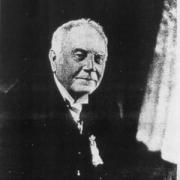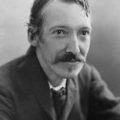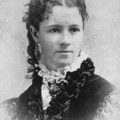Nathan Franklin Barrett
The Town Planner
Today is the birthday of the Landscape Architect Nathan Franklin Barrett, who was born on this day in 1845.
Instead of joining his father's dye company, Barrett went his own way.
After serving in the Civil War, Barrett learned about plants by working in his brother's nursery.
In 1866, the field of landscape architecture was brand new – just a baby - and there is no prescribed coursework or preparation.
Like many Landscape Architects, Barrett secured work as a town planner. He laid out the town Dolgeville New York as well as Pullman, Illinois (now located in Chicago). The town of Pullman was named for George R Pullman, who was one of Barrett's closest friends.
The planning Barrett carried out in Pullman became one of his proudest achievements. Pullman was the country's first planned industrial town.
Gardeners will enjoy hearing about Barrett's personal home garden in New Rochelle. Set on half an acre, Barrett designed his garden in an attempt to show others how to maximize a small space. Listen to the various areas and gardens he managed to install in his modest yard:
"[an] old fashioned Colonial garden, Japanese, Roman, and Moorish gardens, and English topiary work. His cellar... opened to the garden level and through which a long vista continued. [Barrett] also created a Normandy peasant's sitting room, a German peasant's kitchen, [and] a Pompeian Court. A little brook at the rear of the property... added picturesque effects, and the garden was replete with pleasant little nooks and surprises at every turn."
And, one newspaper shared a description of Barrett's wild planting tendencies:
"The Poppy and the Ground Ivy, and Creeping Charlie and Myrtle mingle together; the Aster and Goldenrod feel at home; Ferns and Mosses are used liberally, and while abandon is aimed at, there is 'method in the madness,' and the wild garden and the formal play their part, each enhancing the charm of the other."
Barett co-founded the American Society of Landscape Architects and served as its president in 1903.
Barrett worked all over the country, and when he retired, he had practiced Landscape Architecture for 50 years. By the time Barrett died in 1919, he had been the oldest living Landscape Architect in the United States.
In 1902, Barrett went to Los Angeles to give a speech on Landscape Architecture. Sadly, he caught a cold and lost his voice, so his speech was read for him, and the entire talk was shared in the newspaper. Here's my favorite excerpt - it's where Barrett addresses the spaces where living areas connect with shopping areas, how good Landscaping should mask the sides of ugly buildings, and why maintenance is a vital habit:
"The line between the store and the residence is a battle line. As the business increases, the residence is forced back. The only remedy for this insight is to make the transition as inoffensive as possible.
[And] let us ask the object of taking the valuable space In the city for lawns. Is it not to relieve the buildings? I think so.
Therefore, we should plant large trees to take away the mass of masonry, which must necessarily exist in both house, sidewalk, and street. Bull Street, Savannah, Ga. has always appealed to me, where the walls are covered with Ivy. The old parts of Norfolk, Va., where the Ivy makes a coping two to three feet thick and hangs down over the wall, is excellent.
...[And] the pushcart picking up rubbish is as Important as the trees and flowers. Neatness is as contagious as a new bonnet, and a clean face becomes a habit and is an excellent rivalry to encourage. "
This post was featured onThe Daily Gardener podcast:
helping gardeners find their roots,
one story at a time






